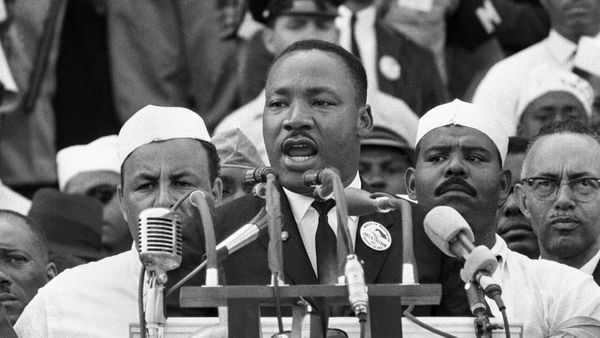
Esther Flanagan has a job on her hands. The behavioural scientist has been tasked with the seemingly impossible: to get police forces across England and Wales to “quit” misogyny and sexism, using similar tactics to those deployed in the major push to reduce smoking in the UK. But she doesn’t seem fazed.
“It’s about making more informed, evidence-based choices and focusing on the things that are most likely to change behaviour,” she says. “It’s not rocket science, it’s behavioural science.”
A new initiative designed to combat entrenched sexism and misogyny in policing will use a similar approach to a big government-led push to reduce smoking in England, which resulted in a drastic fall in the number of smokers.
“Different levers were drawn on at the same time to change the same behaviour – and there’s evidence to show that that’s why it worked,” says Flanagan. “That’s exactly what we’re trying to do with sexism and misogyny. We’re going to tap into all of those levers across the system to give ourselves the best chance of shifting that behaviour.”
The move comes after a torrid period for policing. The murder of Sarah Everard by serving officer Wayne Couzens, and then the jailing of serial rapist David Carrick, a Metropolitan firearms officer, has destroyed trust among women and girls.
A Savanta poll in March found that more than half of women did not trust the police’s ability to keep them safe. A landmark report by Lady Casey found the Metropolitan police, the largest force in England and Wales, was institutionally racist, misogynistic and homophobic.
Andy Marsh, the head of the College of Policing, which is steering the behavioural science initiative across forces in England and Wales, is careful when asked if he agrees with the Met commissioner on that finding.
“Policing has got a deeply embedded cultural problem, which we need to address if we are to win the trust of women in policing and women who are victims of crime,” he says, pointedly. “We haven’t always listened. We haven’t always understood. And we haven’t always responded appropriately.”
The programme is a recognition of the scale of the problem, he says. In any case, labelling a problem isn’t enough to address it, he believes. “I was in the police when they did declare it institutionally racist and training was mandated,” he says, referring to the McPherson report commissioned after the racist murder of Stephen Lawrence. “I witnessed big groups of police officers being told what was right and wrong and how they should behave. Did that help? I don’t think it did.”
So why will this new programme, to be piloted and then rolled out across 43 forces as soon as this winter, work when countless others have failed?
Because it is constructed around interventions that change behaviour, not ones that sound good on paper, says Flanagan. She has spent the last year speaking to officers and reviewing research on sexism. “I think it’s fair to say that a lot of male colleagues have been shocked by what they’ve heard from women,” says Marsh.
Flanagan’s research identified 220 behaviours related to sexism and misogyny within police forces, and 120 barriers in the way of better behaviour. These include a culture of solidarity that protects perpetrators such as Couzens, reportedly nicknamed “the rapist” among colleagues. It also found that officers do not trust that reports will be taken seriously or kept confidential. As in the rest of society, low-level sexism is everywhere.
The plan includes a range of interventions, from making it easier and safer for officers to report bad behaviour by colleagues, and protecting those who do, to “red-flag” training for leaders and career boosts for officers who demonstrate inclusivity.
Officers will also be put through immersive training, where they have to act out how to confront sexism, in the same way they are trained to deal with rowdy protesters.
But the messaging of change will be as important as giving officers the tools to confront sexism, says Flanagan. While the instinct of critics – and many senior officers – may be to blast officers with messages of zero tolerance to sexism, there’s no point if it won’t work, she argues.
“If you look at behavioural psychology … some people might experience that as a threat to their personal freedom. They might feel blamed for wrongdoing. And actually, they might discredit the message altogether, because it feels like an attack, and then seek to protect the status quo.”
Instead, messages tune into the “emotional stuff” and focus on common goals, stressing that all staff have a choice. “You can reduce that defensiveness, but also be very clear about what it is you expect people to do,” she says.
Marsh – acutely aware of the criticism policing is facing – stresses that aggressive methods are also being used to root out the worst offenders in policing. “We’re using the most intrusive tactics,” he says. “Staff should know that work is not a safe place to be misogynistic or racist.”
He says the initiative is not a “kneejerk” reaction to the Casey report, but was in process before the damning review was published.
“We need a system-wide intervention to tackle this, because it’s cultural,” he says. “That’s why this [programme] is different and better. And why I think it will be a success.”







